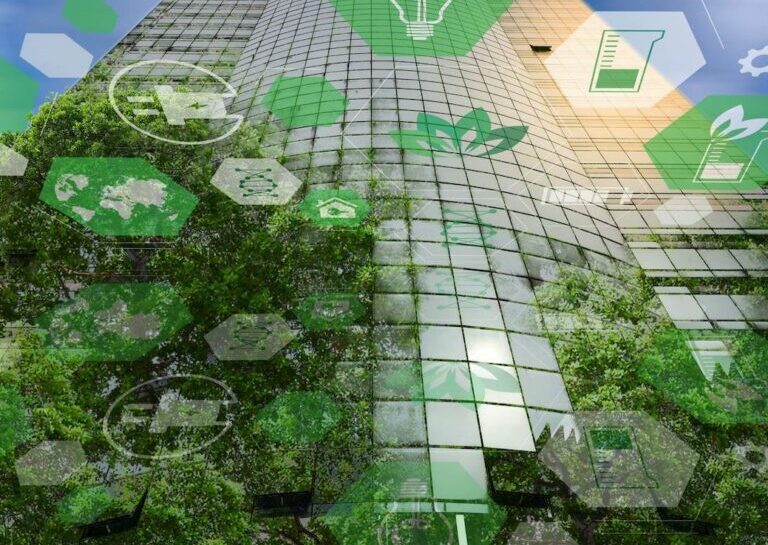
Tlak prichádzajúci od širokého spektra zainteresovaných strán, vrátane zákazníkov a akcionárov, meniacej sa regulácie a aj zvyšujúcich sa prevádzkových nákladov čoraz silnejšie podnecuje zmeny a nevyhnutnosť inovácii naprieč všetkými odvetviami. Tento trend sa nevyhol ani oblasti predaja a distribúcie energií.
Energetické spoločnosti, ktoré v minulosti podceňovali implementáciu nových technológií, si až v poslednom desaťročí začali uvedomovať svoj technologický “gap”. Tento tradičný sektor teraz čelí obdobiu vysokých investícií, ktoré sú potrebné na minimalizáciu technologického dlhu. To, aké technologické výzvy energetika v súčasnosti rieši, sme si pre vás pripravili v tomto článku
1. Digitalizácia a automatizácia procesov
S neutíchajúcim tlakom na zvyšovanie efektivity je stále na mieste téma zefektívňovania procesov. Vďaka množstvu inovatívnych technologických riešení umožňujúcich digitalizáciu a automatizáciu procesov na trhu aj Energo firmy hľadajú možnosti ich využitia. Navyše v minulom i tomto roku bola potreba digitalizácie umocnená zatvorenými pobočkami, povinnou prácou z domu a nutnosti vybaviť požiadavky zákazníkov on-line z pohodlia domova. Náhle, zo dňa na deň, bolo potrebné procesy meniť a ohýbať tak, aby bolo možné zabezpečiť ako-tak plynulý chod spoločností. Digitalizácia procesov sa v značnej miere týka zákazníckych procesov a účtovníctva, terénnych výkonov pracovníkov, komunikáciu s partnermi a dodávateľmi a ďalších kľúčových procesov.
Súvisiacou veľkou témou je samotná automatizácia procesov, a tá sa nevyhla predovšetkým interným často sa opakujúcim monotónnym činnostiam. Tým sa nevyhnutnosťou stalo napríklad hľadanie OCR riešení, uplatnenia robotizácie a veľmi potrebného workflow manažmentu.
Práve napojením na NIA sa stávajú partnerské banky kvalifikovaným správcom identity (Identity provider – IdP). Poskytovanie elektronickej identity (eID) je bezplatné a klient má na ňu nárok, ak spĺňa zákonné podmienky. Klient si tak po overení dokladov vytvorí eID napojenú na NIA napríklad cez prístup do svojho internetového bankovníctva. Je však pravdepodobné, že v budúcnosti bude možné získať eID aj bez nutnosti otvorenia bankového produktu.
2. Mobilné aplikácie - pre zákazníkov a zamestnancov
Za účelom neustálej snahy o zvyšovanie efektivity sa veľkou témou stávajú mobilné aplikácie. V kontexte aplikácii pre zákazníka dokážu zvyšovať angažovanosť zákazníkov a byť novým “touchpointom” pre spoločnosť, ktorý sa stane vhodným spôsobom na vytvorenie samoobslužnej zóny pre zákazníkov. Tým vznikajú príležitosti na predaj dodatočných produktov a služieb a rovnako sa zvyšuje miera automatizácie a digitalizácie v spoločnosti (napr. menej papierových dokumentov). Na rozdiel napríklad od finančných inštitúcií je veľkou výzvou vytvorenie dostatočne atraktívneho obsahu mobilných aplikácií, ktorý by kontinuálne priťahoval zákazníkov.
Druhým hlavným spôsobom využitia mobilných aplikácií sú tie funkcionality, ktoré zjednodušujú prácu zamestnancom v teréne. Takouto formou dokážu zaznamenávať napríklad aktuálnu situáciu, realizované výkony či vstupovať do interných systémov spoločnosti na diaľku.
3. Paperless
Aj v energetike sa spoločnosti snažia znižovať náklady a púšťajú do iniciatív, ako existovať na pracovisku úplne bez papiera. Napomáha tomu aj posun smerom k zmiešanému modelu, kde pracovníci kombinujú prácu v kancelárii a práce na diaľku podporovanú technologickými riešeniami. Nutnosť pracovať z domu a uzavretie pobočiek skôr zosilnili a urýchlili existujúci trend, ako vytvorili nový. Kedysi jednoduché témy ako podpisovanie zmlúv na pobočkách a schvaľovanie interných dokumentov sa zrazu stali pálčivými témami, ktoré pomocou prístupných softvérových riešení nie je problém zvládnuť.
Samozrejme, ekonomický pohľad nie je jediný ktorý formuje bezpapierovosť vo firmách. Neutíchajúci hlas spoločnosti volajúci po ekologických zmenách je v energetike prinajmenšom dvojnásobný.
4. Posilnenie úlohy IT a Enterprise architektúry
V snahe o dobiehanie technologického a taktiež architektonického dlhu si spoločnosti uvedomili, že je viac než potrebné prestať existovať v silách a vytvoriť IT štruktúru, ktorá je schopná podporiť dynamiku obchodných aktivít a zároveň spĺňať požiadavky na stabilitu, presnosť a bezpečnosť v oblasti distribučných systémov. Jedným z účinných prostriedkov je existencia jasne definovanej “roadmapy” architektúry. Tú je potrebné pripravovať v kontexte historického dlhu, aktuálneho aplikačného prostredia a infraštruktúry, prebiehajúcich a plánovaných projektov a zmien a v neposlednom rade znalosti aktuálnych trendov v oblastí technológií, platforiem a metodológií vývoja softwarových riešení.
Vhodne vyskladaný architektonický tím podporujúci životný cyklus spracovania biznis požiadaviek, dokáže aktívne vstupovať do procesu už v rannom štádiu definovania biznis zadania a jeho súladu so stratégiou spoločnosti, až po posledné kroky nasadzovania riešenia do prevádzky, či vyhodnotenia pilotných aktivít.
Ukazuje sa, že posilnenie vlastnictva jednotlivých architektonických vstupov, vhodné organizačné nastavenie rolí architektov a transparentné nastavenie architektonických procesov je silným faktorom pri prioritiizácii požiadaviek, stanovení udržateľnej roadmapy. Čo ide ruka v ruke so znižovaním reálneho “Time to Market” a konečných nákladoch za dodávky.
5. Cloud
Špecifickou a strategicky rôznorodou je oblasť využitia cloudových technológii a riešení. S rozmáhajúcou sa snahou veľkých IT hráčov poskytujúcich komplexné riešenia, platformy a služby o prechod do cloud prostredia. Samozrejme, je nevyhnutné dopredu sa zamýšľať nad architektúrou existujúcich ako aj plánovaných systémov a formou ich nasadenia.
Evidentná je náklonnosť obchodných spoločností o využitie cloudových služieb, nakoľko prinášajú výhody jednoduchej a kratšej konfigurácie prostredí, rieši problém s obstarávaním hardware infraštruktúry, prípadne zmierňuje straty, ak padne rozhodnutie zastavenia prevádzky riešení, ktoré nenaplnili biznis očakávania.
Na druhej strane, pre distribučné spoločnosti nemusia byť externé cloudové platformy až tak zaujimavé, nakoľko disponujú vlastnou infraštruktúrou datacentier, ktoré sú nevyhnutné pre zabezpečenie prevádzky. V skratke povedané, preferované prostredie môže byť privátny cloud, kde sa čoraz častejšie nové riešenia nasadzujú v podobe kontajnerov. Očakávame, že v najbližších rokoch sa aj v distribučnej oblasti budú objavovať inovácie systémov, ktoré budú vo väčšej miere využívať externé cloud prostredie.
6. API
Pre potreby automatizácie procesov, ako aj pre zatraktívnenie online prostredia samoobslužných zón, sa pristupuje k zmenám v koncepcií a rozsahu využitia integračných služieb. Podporuje sa tvorba APIs, ktoré nahrádzajú manuálny prenos dát medzi systémami a prinášajú pre zákazníka nové možnosti a funkcionality do online kanálov.
Spoločnosti sa musia zamerať na lepšie pochopenie vlastného ekosystému aplikácií a popis komplexného dátového modelu aby bolo možné jednotlivé API navrhovať efektívne a vyhnúť sa duplikácii dát a následnej rekonciliacii. Na optimálnu podporu Frontend aplikácií je dôležité nasadenie/rozšírenie konceptu Operational Data Store, ktorý bude zdrojom dát pre dotazy prostredníctvom API a zníži sa záťaž na Backend systémy.
7. Reporting a BI
Spoločnosti takého rozsahu ako distribúcia a predaj energií čelia problému, kedy sú dáta buď ťažko dostupné, alebo ich je príliš veľa a stávajú sa neprehľadnými. Optimálnym riešením je reporting a nástroje Business Intelligence (BI), ktoré spracujú množstvo dát do prehľadnej a vizuálne atraktívnej formy. Najčastejšie sú to obchodné, procesné dáta, podklady k účtovníctnu, finančnému a kapacitnému plánovaniu.
Zaujala Vás táto téma?
Greyson Consulting už 14 rokov prináša inovácie spoločnostiam v Strednej Európe. Máme skúsenosti s projektami v oblasti energetiky v energetických spoločnostiach na Slovensku a v Čechách, ktorým pomáhame analyzovať ich súčasné postavenie a stratégie v IT oblasti, digitalizovať a adaptovať sa na príchod najnovších technológií a trendov.




